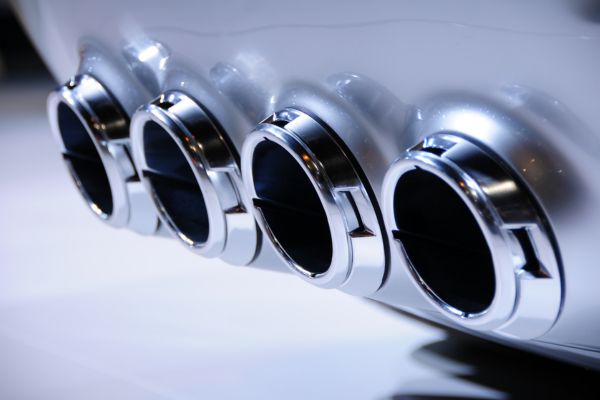Why Aftermarket Exhaust Systems Get So Much Attention
If you’ve been around car enthusiasts for even a minute, you’ve probably heard them talk about aftermarket exhaust systems. And let’s be real—there’s a reason people love them. It’s not just about making your car sound louder (though that’s definitely part of the fun). It’s about unlocking performance, getting better efficiency, and adding a personal touch that stock systems just don’t deliver.
The thing is, manufacturers design factory exhaust systems with cost and general regulations in mind. They want something that’s quiet, efficient enough, and cheap to produce at scale. But if you’re the type who wants more horsepower, sharper throttle response, or even just a deeper growl when you hit the gas, then aftermarket exhaust systems are where the magic happens.
What Exactly Are Aftermarket Exhaust Systems?
At their core, exhaust systems handle one job: guiding engine gases out of your car. Sounds simple, right? But when it’s done efficiently, your engine “breathes” better. That means more power, smoother operation, and sometimes even better fuel economy.
An aftermarket exhaust system is basically a replacement (or upgrade) for the one your car rolled off the factory line with. These systems are engineered with performance and sound in mind. They often feature larger pipes, better bends, and high-quality materials like stainless steel or titanium.
And here’s the kicker—they aren’t one-size-fits-all. From cat-back systems to axle-backs and full headers, you’ve got options depending on how deep you want to go into the performance rabbit hole.
The Performance Gains You’ll Notice
So, why do gearheads keep talking about aftermarket exhaust systems like they’re the holy grail? Simple: performance.
When gases flow out more freely, your engine doesn’t have to work as hard. Less backpressure means more power at the wheels. Depending on your setup, you could see horsepower gains that actually make a difference in real-world driving.
But it’s not only about raw numbers. A good aftermarket exhaust can sharpen throttle response. That little lag when you hit the gas? It’s reduced. Plus, if you pair it with other mods—like a cold air intake or a proper ECU tune—you’re looking at a car that feels completely different from stock.
That Sound Though…
Let’s be honest for a second. Even if performance wasn’t part of the equation, a lot of folks go for aftermarket exhaust systems purely for the sound.
Think about it: the deep rumble of a V8, the raspy scream of a tuned four-cylinder, or the smooth growl of a six-cylinder—those sounds aren’t just random. They’re shaped heavily by the exhaust system. With an aftermarket setup, you can fine-tune your car’s personality. Some systems give you an aggressive roar; others provide a refined tone that’s sporty without waking up the entire neighborhood.
And yeah, some people just want to turn heads at a stoplight. No shame in that.
Materials Matter More Than You Think
One thing people overlook when they’re shopping for aftermarket exhaust systems is the material. Cheap systems might look flashy at first but rust out in a year or two. High-quality stainless steel or titanium? That stuff lasts. Not only does it resist corrosion, but it also keeps weight down—an underrated performance factor.
Titanium exhausts, for example, are insanely light and heat-resistant. They cost more, but if you’re serious about performance (or track days), they’re worth every penny.
The Different Types of Aftermarket Exhaust Systems
Here’s where choices really kick in:
- Cat-Back Systems: Replace everything from the catalytic converter back. A solid balance between performance and affordability.
- Axle-Back Systems: A more budget-friendly option. Mostly about sound and aesthetics, since they replace the rear section of the exhaust.
- Header-Back Systems: Full replacements from the headers all the way back. The most expensive but also the most performance-oriented option.
- Headers: Replacing just the exhaust manifolds for improved flow. Often combined with cat-back setups for serious power gains.
Each option comes with trade-offs. More performance usually means higher costs and sometimes more noise. It really depends on what you’re after.
Are Aftermarket Exhaust Systems Street Legal?
This is where things get tricky. Not every aftermarket system is legal everywhere. Noise regulations vary, and emissions laws can be strict depending on where you live. Some states in the U.S., for example, have tough smog laws that limit what kind of exhaust modifications you can run.
Before dropping cash on a system, check the local laws. The last thing you want is a fat ticket—or worse, failing inspection because your car’s too loud or doesn’t meet emissions standards.
The Installation Side of Things
If you’re handy with tools and have a decent garage setup, installing an aftermarket exhaust system can be a fun weekend project. But let’s not sugarcoat it—it can get messy. Rusted bolts, awkward angles, and tight spaces can turn a “couple hours” into an all-day ordeal.
A lot of enthusiasts prefer having a professional shop handle the installation. That way you know it’s fitted correctly, sealed tight, and aligned properly. Because let’s be real: nothing’s worse than spending money on a new system only to have it rattle every time you hit a bump.
The Cost Factor: Is It Worth It?
Here’s the question that always pops up: are aftermarket exhaust systems worth the money?
Short answer: yes, if you’re into cars. Long answer: it depends on what you expect.
If you’re hoping your Honda Civic will suddenly gain 100 horsepower, you’re in for disappointment. But if you’re chasing a combination of better sound, slight performance gains, and a unique look, then absolutely—it’s money well spent. Think of it like buying a new pair of shoes that not only look great but also make you run a little faster.
Wrapping It Up
At the end of the day, aftermarket exhaust systems are about more than just pipes and mufflers. They’re about making your car feel alive—giving it a voice, freeing up horsepower, and letting you customize your driving experience.
Sure, there are costs, installation headaches, and legal stuff to think about. But for most enthusiasts, those trade-offs are worth it. Whether you’re after raw performance, a head-turning sound, or simply adding your own stamp to your ride, an aftermarket exhaust system can completely change how you feel behind the wheel.
So, if you’ve been on the fence, maybe it’s time to take the plunge. Because let’s be real—driving should be fun, and sometimes, a little extra rumble under the hood is all it takes to fall in love with your car again.



